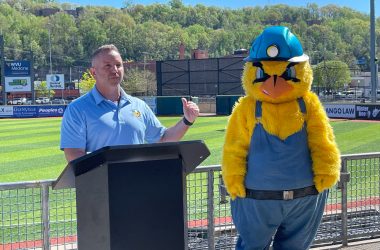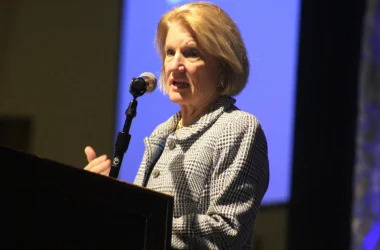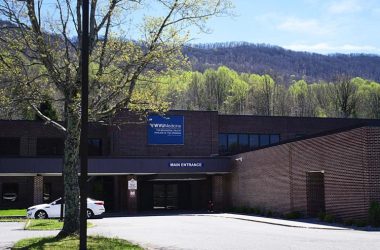By JOHN DAHLIA
NCWV Media
FAIRMONT, W.Va. — The nation and its weather community breathed a collective sigh of relief early Saturday when the world’s newest and most advanced weather satellite launched into orbit. High Tech Foundation president and CEO Jim Estep watched as well.
“The amount of data they are collecting is really mind-boggling,” Estep said of the weather information the National Oceanic Atmospheric Administration’s Joint Polar Satellite System-1, or JPSS-1, will soon be sending down from orbit. “The fact that we participate in that here in Fairmont really positions us well to be front and center with new technology evolution and the opportunities that go along with that.”
JPSS-1 lifted off from Vandenberg Air Force Base, California, at 4:47 a.m. EST Saturday. The satellite’s next-generation technology will help improve the timeliness and accuracy of U.S. weather forecasts three to seven days out.
“There are three official names for satellite operations located in the Fairmont facility,” NOAA spokesman John Leslie said.
“We call them the GOES-R Remote Back-up and the Joint Polar Satellite System Backup. Together, we refer to them as the Consolidated Backup.”
The GOES or Geostationary Operational Environmental Satellite-R Series satellite launched in Nov. 2016. After it reached orbit, GOES-R became GOES-16. It will provide images of weather patterns and severe storms as frequently as every 30 seconds, according to the GOES-R mission description on the website. These images will provide National Weather Service forecasters the meteorological equivalent of going from black and white to Ultra-HD color TV, according to a NASA press release. The new satellite can deliver vivid images of severe weather by scanning the Earth five times faster, with four times greater image resolution and using triple the number of spectral channels compared with older weather spacecraft.
Like its sister satellite, the JPSS-1’s name was changed once it reached its final orbit to NOAA-20. Scientists and forecasters will be able to use the satellite’s data officially after its five advanced instruments, all significantly upgraded from those on NOAA’s previous polar-orbiting satellites, complete three months of tests. The satellite is designed to operate for seven years, with the potential for several more years.
“We’ve been needing an upgrade with satellite resolution for the following variables: atmospheric temperature and moisture, clouds, sea-surface temperature, ocean color, sea ice cover, volcanic ash and fire detection,” WSAZ-TV Meteorologist Brandon Butcher said.
Butcher, who also teaches an online course in meteorology at Fairmont State University, said the weather data from NOAA-20 will be like comparing the first-generation cellphone technology to the very latest Apple iPhone or Samsung Galaxy devices.
“The average person on the street has no idea just how important this program is to our country and world, but it is a big deal,” Estep added. “We are one of two places on the planet that is providing command and control and management of the two most important non-defense satellite programs in the world.”
Backup sites like the one in Fairmont are part of NOAA’s mission to ensure continuity in operations, especially if an unforeseen event impacts NOAA’s Satellite Operations Facility in Suitland, Maryland, and Wallops Command and Data Acquisition Station in Wallops, Virginia, Leslie said.
“When the CBU is supporting the NOAA satellite operations there will be over 30 terabytes of data flowing to customers from NOAA/NASA Suomi National Polar-orbiting Partnership, JPSS-1, GOES-16 and GOES-S,” Leslie said.
The Fairmont facility will continue to play a major role during testing procedures happening now, Leslie said adding “NOAA is looking forward to being part of the Fairmont community for many years to come.”
See more from The Exponent Telegram





